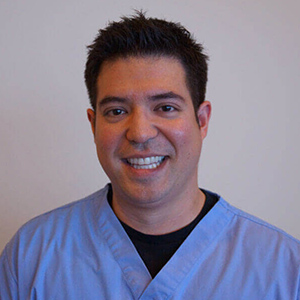Tooth extraction triggers more than a visible gap—it initiates gradual bone loss that may compromise facial structure and future dental treatments. Bone grafting offers a reliable method to preserve the integrity of the jawbone, maintain oral stability, and support long-term outcomes. Having a know-how of its importance can help you make informed decisions for lasting dental health and function.
What Is Bone Grafting?
Bone grafting is a simple yet essential dental procedure. It involves placing graft material in the empty socket after a tooth is removed. This material acts like a scaffold. It supports new bone growth in the area and keeps the shape of the jaw intact.
Think of bone grafting as providing essential support where a tooth once was. Without anything in place, the jawbone begins to deteriorate because the body no longer sees a reason to maintain it. By placing graft material into the empty socket, the body is signaled to preserve and rebuild the bone in that area.
There’s no need to feel nervous about the process. Most patients say it’s no more uncomfortable than the tooth extraction itself. The real benefit comes months later when your bone is strong and ready for whatever comes next—whether that’s an implant, a bridge, or simply keeping your natural smile shape.
Preserves Jawbone Structure
When a tooth is eliminated, the surrounding bone begins to shrink—a natural biological process. Over time, this bone loss can impact your facial appearance and oral function. It may lead to sunken cheeks, bite misalignment, or movement of nearby teeth, all of which can impact both comfort and aesthetics.
Bone grafting helps prevent this from happening. It gives your body a reason to hold onto the bone. Instead of disappearing, the area stays firm and solid. This helps keep your natural jawline and facial balance intact.
If you’ve ever seen someone’s facial shape change after they lose several teeth, you’ve seen the effect of untreated bone loss. A small procedure like grafting makes a big difference.
Supports Future Dental Implants
Dental implants are one of the most suitable ways to take the place of missing teeth. They’re strong, long-lasting, and feel like your own. But there’s one thing implants absolutely need—a solid foundation. That’s where grafting becomes essential.
Without enough bone, an implant has nowhere to anchor. The screw-like post won’t hold well, and that means more risk for failure. Bone grafting after extraction keeps the area healthy and strong. It sets the stage for a future implant that stays secure.
If you are not planning to get a dental implant right away, that is completely fine. Having a bone graft now helps preserve your options for the future. Even if you are unsure about the type of dental treatment you may need in the coming years, grafting ensures that your jawbone remains healthy and ready for future procedures.
- Why bone support matters:
- Helps implants stay stable
- Reduces the risk of shifting or failure
- Keeps treatment options open long-term
When visiting a dentist near you, ask if grafting makes sense for your situation. Even if an implant isn’t in your immediate plans, protecting your jawbone now is a smart move.
Maintains Gum Contour and Smile Appearance
The gums do more than cover your teeth. They frame your smile. They also fill in the space between your teeth and help your mouth look natural and full. When the bone underneath the gums starts to shrink, the gums follow. This creates dips, hollows, and an uneven appearance in your mouth.
Grafting helps prevent this collapse. It keeps the bone level under the gums steady, so the soft tissue doesn’t sag or sink. This isn’t just about looks—it also affects how well dental restorations like bridges or dentures fit.
Patients who skip grafting sometimes find that their new teeth don’t look quite right. There’s a gap, or the shape feels off. Preserving gum contour makes everything smoother down the line. For patients in Bayou Vista considering bone grafting in Bayou Vista, TX, this step is key to maintaining a natural-looking smile and comfortable fit for future restorations.
Types of Grafts Used
Not all bone grafts are the same. Depending on your needs, your local dentist or a dentist in Bayou Vista might choose from several types. Here’s a quick breakdown of the most common options:
- Autograft
- Comes from your own bone (often your chin or hip)
- Highest success rate, but requires a second surgical site.
- Allograft
- Donor bone from a tissue bank
- Safe, widely used, and avoids extra surgery
- Xenograft
- Bone from an animal source, often bovine
- Helps preserve volume and is gradually replaced by your natural bone
- Synthetic grafts
- Man-made materials that mimic real bone
- Works well for minor grafts and socket preservation
Your dentist will explain the pros and cons of each. What’s right for one patient might not be best for another. Our team tailors the treatment to you.
Final Thoughts
Bone grafting plays a vital role in protecting your oral health after tooth loss. It keeps your jaw strong, maintains your gum shape, and sets the stage for future treatments. Acting early prevents avoidable issues later. Ready to safeguard your smile? Schedule your visit with Bayou Vista Dental today and get personalized guidance from a trusted local team committed to your care.






